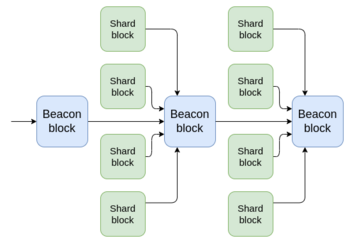
Vitalik, in his Endgame[1] article, discusses possible long term futures for the ecosystem, arguing that rollups, in a sense, are execution shards, though with a different set of tradeoffs than native sharding.

Namely, the advantages being alternative execution environments, configurable security and performance tradeoffs, and generally more space to experiment.[2]. However, unlike sharding, the communication provided is not native. Instead, complex bridging protocols have to be created between pairs of rollups. If not for bridging, then rollups have to go through the L1, creating delays and ultimately congestion as demand increases. One could argue that a faster L1 such as Solana would improve things, but ultimately this is a constant factor improvement and does not scale to the world.
We, however, have a much stronger claim. We believe that Layer N's vision is the culmination of these ideas, offering a variety of independent execution environments, configurable security, and native communication. Essentially Layer N can be thought of as providing the equivalent of sharding as an L2. We'll go one step further and argue that Layer N's vision is the only viable approach for the endgame.
We believe that for blockchain to scale to the next billion users, it must provide the ability for applications to scale independently. There is a wide gamut of high-performance applications that would be fantastic in the ecosystem, but simply can't achieve the numbers they need to function. Imagine algorithmic traders interfacing with exchanges in microseconds, or games being run in real-time. Clearly, these applications also need to be able to reliably compose, as unlike the internet, blockchain applications have a strict requirement for atomicity in order to be able to transfer assets. This is what Layer N is striving for.
For the first phase of development, all applications deployed on Layer N act as one large rollup, deriving security directly from the L1 and thus from the same stakers and same smart contract. This allows us to create settlements that also account for messages being passed between rollups. The key is that we've made everything in our stack modular. The execution environment is general and can provide a variety of options and allow horizontal scaling. The communication is built-in and thus applications can focus on building their product rather than the bridging. The sequencer can be moved to another party, providing built-in proposer-builder separation at the L2 level. Applications can choose different sources of trust, opting in to ZK if they need faster finality. And so on.
As the protocol grows, we envision applications forming trust subnets, essentially networks of rollups that share security. Shared security is what enables fast messaging. Between these subnets, we can have bridging like traditional bridging methods such as Cosmos' IBC. This enables a tradeoff and thus entire classes of applications possible is no other model.
1. https://vitalik.eth.limo/general/2021/12/06/endgame.html
2. https://vitalik.eth.limo/general/2024/05/23/l2exec.html